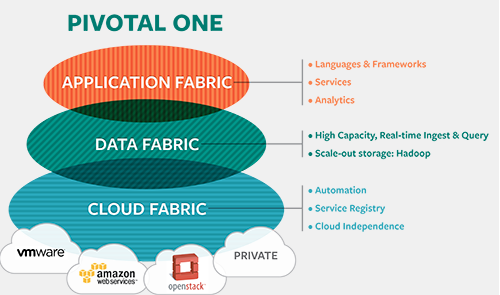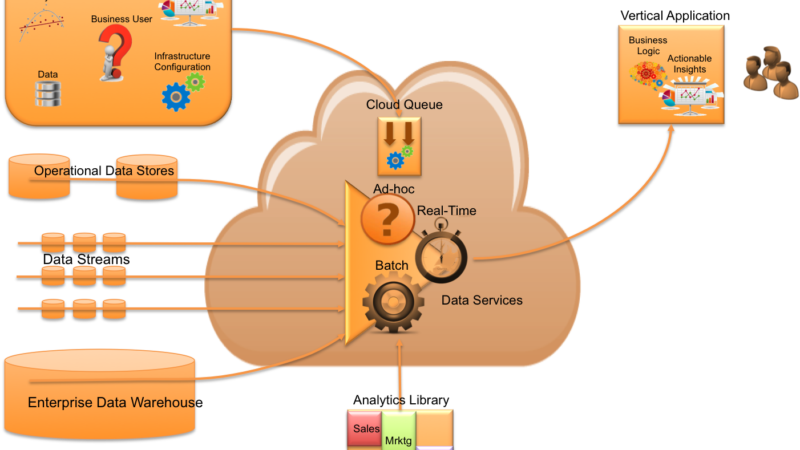More than HA/DR, More than VM Management
Introduction to CloudStation
SIOS CloudStation is the first comprehensive hybrid and federated cloud management suite with a focus on high availability and disaster recover to empower enterprises and small businesses alike to transform, manage, and optimize their IT infrastructure across cloud architectures (both on-premise non-virtualized and virtualized resources, or “internal clouds”, as well as “external” cloud resources).
Virtualization solutions each provide their own virtualized machine management tools. In addition, both cloud providers and third parties offer cloud monitoring and administration software-as-a-service. However, little exists to provide a single solution for administrators to manage both internal and external cloud resources.
SIOS CloudStation delivers comprehensive workload migration and management, with an emphasis on application availability and disaster recovery automation in an integrated offering. SIOS coexists with the offerings from internal/on-premise virtualization providers such as VMware (e.g VMware FT, HA, DRS, and Vmotion), and external/off-premise cloud provider offerings from those such as Amazon.
Cloud-enabled HA / DR
For CIOs, the company’s first step in defining business continuity and disaster recovery begins with determining recovery point objectives (RPOs) and recovery time objectives (RTOs) for each business process and then mapping those to each of the underlying business applications. This, in turn, helps dictate the solution required to maximize return on investment in High Availability (HA) and Disaster Recovery (DR) solutions.
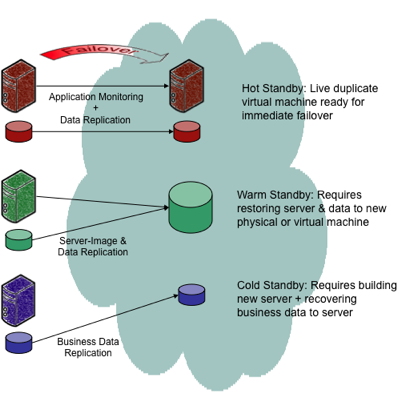
The SIOS CloudStation solution supports many cost-effective HA/DR configurations depending on RPOs and RTOs with the following representing a few.
Business Data Replication
The simplest implementation of protection against production outages is to use real-time replication of business data only (excluding the operating system and application).
In the case of failure, recovery would require that administrative staff create a new on-premise machine or cloud virtual machine with the proper operating system and application environment. Then they would recover critical business data, returning the new server to the same state as the original. RTOs may be on the order of hours.
The customer would simply install the CloudStation DataKeeper data replication agent on the production server and CloudStation will automatically provision a persistent image within the cloud provider’s environment. Data on the production sever would be replicated to the cloud in real-time asynchronously.
Server-Image Data Replication
To reduce RTOs to minutes rather than hours, administrators can choose to configure real-time replication of the entire server image including OS, applications, and business data. In this case, recovery involves applying the replicated system image to a known-good server. This alleviates the need to build the server from scratch, and reduces RTOs significantly.
This requires the CloudStation DataKeeper data replication agent be installed on the production server, but now increases the size of cloud storage and replication bandwidth required to accommodate the OS, applications, and business data.
Application Monitoring and Data Replication
By installing the LifeKeeper agent (in addition to the DataKeeper data replication agent) on your production server, the SIOS CloudStation will automatically configure a live copy of the entire production server in your cloud of choice. Similar to the Server-Image Data Replication scenario above, these “active” production-ready images are replicated on a real-time basis asynchronously and made available immediately in the case of system failure. The added benefit involves the CloudStation technology monitoring the health of the applications on the server, and automatically failing those mission/business-critical applications over to the cloud until on-premise infrastructure can be repaired and recovered. RTOs in this scenario are seconds, providing a near-fault tolerant environment. The SIOS CloudStation supports on-premise application server clusters up to 32 nodes.
The automated configurations managed by CloudStation involve converting the customer’s existing physical server to a virtual server (P2V) and then uploading to a cloud provider. If the customer is already using virtualized servers, these servers can be uploaded into the cloud without conversion.
Once the latest machine image is uploaded into the cloud, customers can view their new target server via CloudStation. The customer can then configure both LifeKeeper and DataKeeper agents to customize the High Availability and Disaster Recovery environments.
This configuration requires the CloudStation LifeKeeper and DataKeeper agents be installed on the production server. Agents will also be deployed (automatically) into the Cloud as part of the initial configuration of the Cloud.
Many cloud providers like Amazon are building out their datacenters worldwide. This provides enterprise customers with access to resources locally.
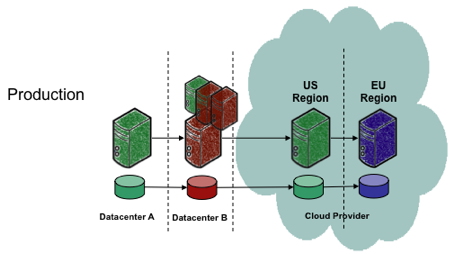
However, in the event that a region within a provider’s service becomes unavailable, critical applications leveraging the cloud need automatic migration to other regions within the service. In some circumstances the enterprise may want multi-cloud coverage as well.
CloudStation supports the ability for administrators to provide business continuity within the public cloud leveraging the LifeKeeper and DataKeeper agents.
This is performed by creating virtual machine deployments within each region and configured together with on-premise machines as part of one high availability cluster.
Failover candidates can be configured in separate cloud deployments (Inter-Cloud HA) just as they are shown above as regions within the same cloud (Intra-Cloud HA).
Cloud for Data Warehousing
The SIOS CloudStation suite allows enterprises to effectively manage disparate data sources. Operational data sources produced by a number of separate enterprise locations (e.g. business units) can be automatically replicated to the cloud for continuous data protection – providing access to critical data directly from the cloud in case of infrastructure failures.
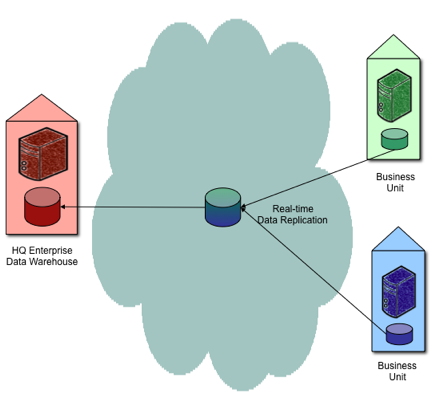
Business intelligence applications requiring access to an aggregated view of enterprise data can use the replicated cloud data as a consistent source of data, feeding into headquarters’ enterprise data warehouse and other decision support and business intelligence environments.
This configuration requires the CloudStation DataKeeper agent be installed on servers (with access to critical business data) at each enterprise location. Manaul deployment of the agent into the Cloud is also made by administrators with specific configuration of “many-to-one”.
Cloud for Test / Dev
The SIOS CloudStation also provides automated tools for developing a production-ready virtual lab in the Cloud. A production-ready virtual lab in the Cloud can be used by enterprise engineering and test as well as external 3rd party partners who need access to sandbox environments to perform development, upgrades, maintenance, and test against a duplicate copy of the servers/applications running in production.
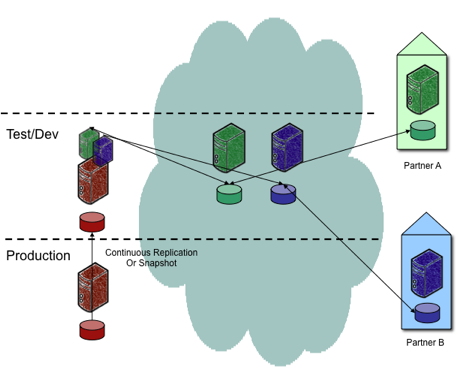
CloudStation includes services to clone production servers and build a test/dev environment which can be continuously updated through DataKeeper replication or through a simple machine image snapshot/cloning function.
Benefits include:
• Perform software upgrades in hours vs. days
• Test environment with production-ready images at any time
• Recover easily from errors or mistakes with rollback/rewind
• Increase quality of deployments
• No hardware and associated admin people needed
Private Cloud
Being able to avoid capital spending on IT and not having to provision for peak capacity will be winning tickets for CIOs to take to the board as they fight for IT budgets. Accelerated consolidation, virtualization and automation strategies will be the building blocks of shared infrastructures, delivered as a self-service utility. The internal private cloud is the logical endpoint of these combined activities.
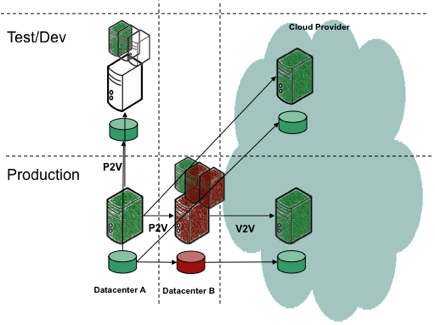
Organizations will seek to emulate, replicate or imitate the Amazon model, even if they can only use a public cloud service for applications such as test, archive, or disaster recovery at first.
Enterprises who launch elastic computing cloud services of their own will have the difficult task of installing their cloud software on hundreds, sometimes thousands of heterogeneous servers typically re-provisioned from the datacenter.
The SIOS CloudStation provides a sophisticated internal cloud management capability including the migration of physical to virtual machines (P2V), virtual to virtual (V2V) both on-premise and off-premise, and virtual back to physical machines (V2P). These capabilities are the core of the provisioning and management control. The solution set also includes monitoring of both internal as well external resources for both usage and costs, and user administration across by department.
Business Continuity with CloudStation
Business Continuity is critical to small, medium, and large enterprises, but all too often they experience the inevitable downtime associated with server failure in production. Traditional disaster recovery solutions are expensive, and offer little value beyond storage. Multi-site failover requiring redundant datacenters can be complex, error prone and expensive.
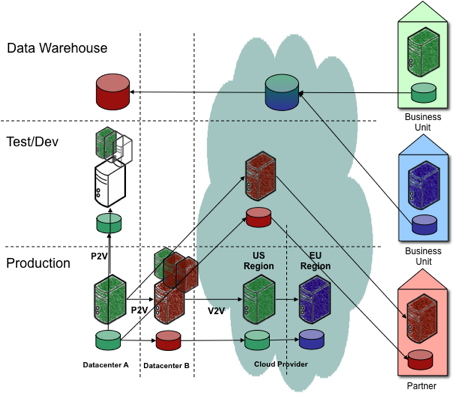
In the case of failure with SIOS CloudStation, mission/business-critical applications running on production servers are back up and running in as little as seconds, and at a fraction of the cost of traditional high availability solutions and without any additional hardware or data centers. The CloudStation solution also provides enterprises cost effective high availability and disaster recovery for hybrid and federated cloud configurations.
CloudStation Architecture
SIOS has combined technologies from SteelEye, the leader in business continuity and replication, and Skydera, an emerging leader in cloud management. The CloudStation solution supports several leaders in IaaS Cloud Computing services such as Amazon, Microsoft, Rackspace, and GoGrid to provide an on-demand virtual copy of the enterprise’s production environment running in the cloud.
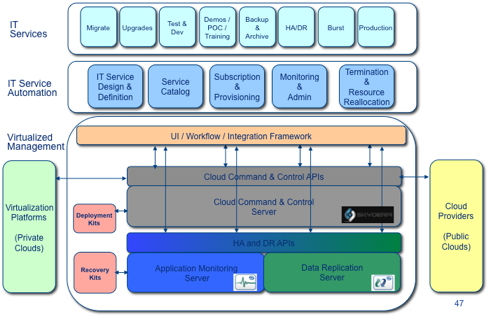
The CloudStation solution includes the following components:
- CloudStation Web Client: a customized web-based UI for administrators allowing them to manage across internal and external clouds.
- Cloud Command & Control Server: software application that provides cloud migration, management and monitoring.
- High Availability Server: software application that ensures the continuous availability of applications by monitoring system and application health, maintaining client connectivity and providing uninterrupted data access regardless of where clients reside.
- Data Replication Server: software application that provides continuous real-time host-based block-level replication of data insuring multiple copies of your data is available at all times.
- APIs: application programming interfaces necessary for access between the CloudStation web client and the various server applications, as well as providing ease of customization for customers.
- Deployment Kits: Skydera-specific deployment commands created for various CloudStation end-user use-cases.
- Recovery Kits: LifeKeeper-specific templates used to configure for specific application recovery (e.g. Oracle, DB2, MySQL, WebSphere MQ, SAP, SQL Server, Exchange Server, etc.)
You can download a solution brief here: SIOS-CloudStation-SolutionBrief

